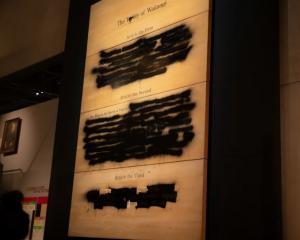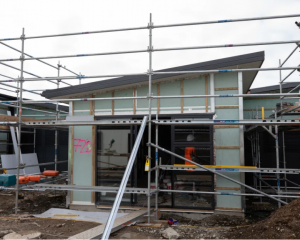An illegal error by the air force seriously endangered the lives of all on board an Air New Zealand international flight, says a report which expressed doubts over the RNZAF's ability to operate safely.
The revelation is in an air force report produced during the investigation into the fatal Anzac Day 2010 helicopter flight that killed three crewmen.
The report reveals that the "improper and illegal" placement of dangerous canisters on the Air NZ flight from Vancouver to Auckland could have destroyed it.
A similar situation in 1995 brought down a United States passenger jet, killing 100 people.
The report does not say when the incident happened, but Air NZ began the service in 2007.
The items shipped on the Air NZ flight contained chemical oxygen generators which, if incorrectly activated, produce extreme heat and become a highly flammable fire risk.
The air force report also found the incident would not have happened if safety recommendations had been adopted - a failing repeated in 53 per cent of cases studied in 10 years.
Air NZ has checked and does not believe it was told of the incident.
Chief pilot Captain Dave Morgan said Air NZ would be contacting the air force today to learn details of the incidents.
The Accident Analysis Report details widespread safety problems throughout the air force.
It has never been made public even though it contains details of how air force safety failures seriously injured and almost killed civilians.
It raised concerns about safe operation of the air force, saying: "The RNZAF does not have the appropriate and effective processes to adequately and reliably ensure safe and effective military air operations."
The report was submitted to the court of inquiry investigation, which narrowed the concerns to 3 Squadron, home to those involved in the fatal Anzac Day flight.
The Minister of Defence, Jonathan Coleman, has already ordered two inquiries into the aftermath of the accident.
An official at his office yesterday said one of those inquiries would expand from studying safety improvements to include elements of the air force's original crash inquiry.
The official said Dr Coleman's office had never received the Accident Analysis Report and had sought a copy from the air force.
In a statement, air force chief Air Vice-Marshal Peter Stockwell said the Accident Analysis Report was central to the inquiry. The air force inquiry "accepted many of the AAR's judgments", but not all.
The Herald has also obtained under the Official Information Act the air force summary on the Anzac Day crash in which one of its top commanders blames it on budget cuts.
In his May 26 summary of the court of inquiry findings, Air Commodore Steve Moore wrote: "When considering this report, I could not help thinking that the genesis of this accident goes back some 10 years when changes to RNZAF command and control were made in an attempt to to make our operations more efficient and cost effective."
He said the air force removed two layers of command and supervision, and "nobody at the time realised the real impact the changes would make".
- David Fisher, NZ Herald












